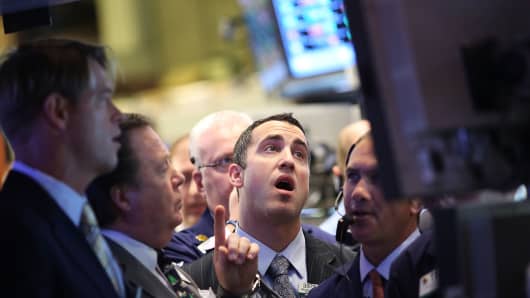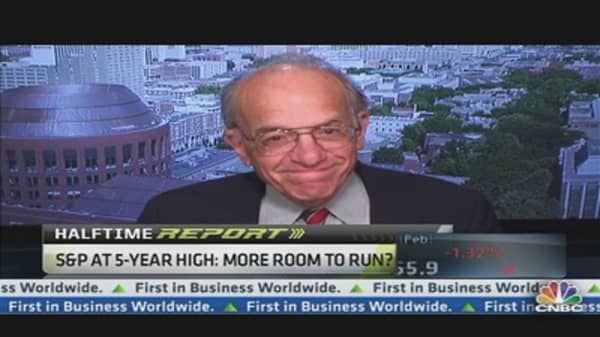"If you want to trade on the headlines you can do that. But if you're looking at fundamentals eventually you're going to hit a brick wall," said Todd Schoenberger, managing director at LandCold Capital.
Earnings season, which just began this week in earnest, is likely to paint a bleak picture of the U.S. consumer, he added.
"Sentiment has improved, but it's completely artificial," Schoenberger said. "You need more than that to sustain any type of rally."
Sneddon said he will be looking for a 2 percent yield on the 10-year Treasury note - currently around 1.9 percent - to signal that the upward momentum for stocks has gotten carried away.
Until then, he said he's adding positions in gold producers as well as utilities and consumer staples.
That strategy of riding the wave but getting ready for a crest is popular.
Michael Cohn, chief market strategist at Atlantis Asset Management in New York, said he's looking for a pullback once the Dow industrials hit the 14,000 neighborhood..
Until then, he's been picking up companies including Southern Copper, Joy Global and Target as well-priced stocks that could ride whatever is left of the early-year rally.
"You've got to wait to be a contrarian," Cohn said. "It's been a benign period of probably decent earnings and no news flow from the idiots who can screw things up."
Indeed, one week does not a trend make, so those bullish on the market believe there will need to be plenty more weeks like the most recent ones in terms of fund flows before sentiment gets too frothy.
"This is showing a lot more renewed confidence from the retail investors that Washington's policies are not going to inhibit a stock market rally," said Dave Lutz, managing director of trading at Stifel Nicolaus in Baltimore. "Just the sheer magnitude of these flows is driving the market. It's a massive tailwind."






